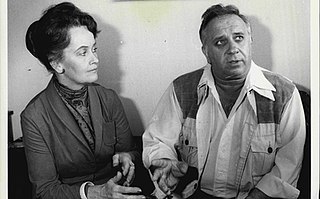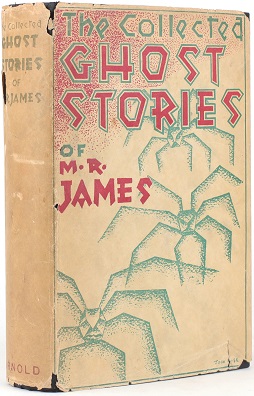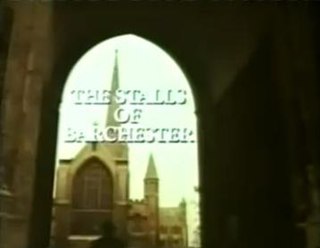Related Research Articles

Montague Rhodes James was an English author, medievalist scholar and provost of King's College, Cambridge (1905–1918), and of Eton College (1918–1936). He was Vice-Chancellor of the University of Cambridge (1913–1915).

A ghost story is any piece of fiction, or drama, that includes a ghost, or simply takes as a premise the possibility of ghosts or characters' belief in them. The "ghost" may appear of its own accord or be summoned by magic. Linked to the ghost is the idea of a "haunting", where a supernatural entity is tied to a place, object or person. Ghost stories are commonly examples of ghostlore.

Edward Warren Miney and Lorraine Rita Warren were American paranormal investigators and authors associated with prominent cases of alleged hauntings. Edward was a self-taught and self-professed demonologist, author, and lecturer. Lorraine professed to be clairvoyant and a light trance medium who worked closely with her husband.

Ghost Stories of an Antiquary is a horror short story collection by British writer M. R. James, published in 1904. Some later editions under this title contain both the original collection and its successor, More Ghost Stories (1911), combined in one volume.

More Ghost Stories is a horror short story collection by British writer M. R. James, published in 1911. Some later editions include the stories in this collection and the earlier Ghost Stories of an Antiquary (1904), combined in a single volume. This is his second short story collection.
Lawrence Gordon Clark, is an English television director and producer, perhaps best known for his A Ghost Story for Christmas series of mostly M. R. James ghost stories, which were broadcast annually by the BBC throughout the 1970s.

"Whistle and I'll Come to You" is a 1968 BBC television drama adaptation of the 1904 ghost story "'Oh, Whistle, and I'll Come to You, My Lad'" by M. R. James. It tells of an eccentric and distracted professor who happens upon a strange whistle while exploring a Knights Templar cemetery on the East Anglian coast. When blown, the whistle unleashes a frightening supernatural force.

A Ghost Story for Christmas is a strand of annual British short television films originally broadcast on BBC One between 1971 and 1978, and revived sporadically by the BBC since 2005. With one exception, the original instalments were directed by Lawrence Gordon Clark and the films were all shot on 16 mm colour film. The remit behind the series was to provide a television adaptation of a classic ghost story, in line with the oral tradition of telling supernatural tales at Christmas.

The Collected Ghost Stories of M. R. James is an omnibus collection of ghost stories by English author M. R. James', published in 1931, bringing together all but four of his ghost stories.

A Warning to the Curious and Other Ghost Stories is the title of M. R. James' fourth and final collection of ghost stories, published in 1925.

"A Warning to the Curious" is a ghost story by British writer M. R. James, included in his book A Warning to the Curious and Other Ghost Stories first published in 1925. The tale tells the story of Paxton, an antiquarian and archaeologist who holidays in "Seaburgh" and inadvertently stumbles across one of the three lost crowns of East Anglia, which legendarily protect the country from invasion. Upon digging up the crown, Paxton is stalked by its supernatural guardian. Written a few years after the end of the First World War, "A Warning to the Curious" ranks as one of M. R. James's bleakest stories.

The Stalls of Barchester is the first of the BBC's A Ghost Story for Christmas strand, first broadcast on BBC 1 at 11.00pm on 24 December 1971. Based on the story "The Stalls of Barchester Cathedral" from the 1911 collection More Ghost Stories by M. R. James, it was adapted, produced and directed by Lawrence Gordon Clark.

There is widespread belief in ghosts in English-speaking cultures, where ghosts are manifestations of the spirits of the dead. The beliefs may date back to animism or ancestor worship before Christianization. The concept is a perennial theme in the literature and arts of English-speaking countries.

"The Mezzotint" is a ghost story by British writer M. R. James, included in his first collection Ghost Stories of an Antiquary (1904).

"The Stalls of Barchester Cathedral" is a ghost story by British writer M. R. James, originally published in 1910. It is included in his collection More Ghost Stories of an Antiquary.
A haunted doll is a handmade or manufactured doll or stuffed animal that is claimed to be cursed or possessed in some way.
"The Trial for Murder" is a short story written by Charles Dickens in 1865. It was originally published under the title "To Be Taken with a Grain of Salt" as a chapter in Dr. Marigold's Prescriptions in an extra Christmas volume of the weekly literary magazine, All the Year Round. It was later published in 1866 in a collection of ghost stories known as "Three Ghost Stories", along with "The Haunted House" and "The Signal-Man".
Ron Weighell was a British writer of fiction in the supernatural, fantasy and horror genre, whose work was published in the U.K., the U.S.A., Canada, Germany, Ireland, Romania, Finland, Belgium and Mexico. His stories were included in over fifty anthologies and published in six volumes containing his own work exclusively. Weighell is listed as an author in the online Bibliothèque Nationale de France, with a selected bibliography. A short biography and limited bibliography are available in the goodreads.com website. A more extensive bibliography of his published work is available in the Internet Speculative Fiction Database. Weighell died on 24 December 2020, some weeks after suffering a stroke. Obituaries have been published by the Fortean Times magazine, the newsletter of The Sherlock Holmes Society of London, and Locus Magazine.

A Warning to the Curious is a 1972 supernatural drama produced by the BBC as the second instalment of its A Ghost Story for Christmas strand. As with the previous instalment, The Stalls of Barchester (1971), it was adapted and directed by Lawrence Gordon Clark and was first broadcast on BBC 1 at 11pm on Christmas Eve 1972. Running at 50 minutes, the drama was based on "A Warning to the Curious", a ghost story by British writer M. R. James, included in his book A Warning to the Curious and Other Ghost Stories first published in 1925.
There have been many adaptations of the works of M. R. James for television, radio, audio and the stage, as well as a 1957 film adaptation of "Casting the Runes" by Jacques Tourneur, titled Night of the Demon.
References
- James, M. R. (2006). Joshi, S. T. (ed.). The Haunted Dolls' House and Other Ghost Stories: The Complete Ghost Stories of M. R. James, Volume 2. London: Penguin. ISBN 9780143039921 . Retrieved 23 August 2022.
- James, M. R. (2011). Jones, Darryl (ed.). Collected Ghost Stories. Oxford: Oxford University Press. ISBN 9780199568840 . Retrieved 23 August 2022.
- Pardoe, Rosemary (1993). "Story Notes: 'The Haunted Dolls' House'". Ghosts & Scholars. 16: 27–28. Retrieved 23 August 2022.
- Royal Collection Trust (nd). "Montague Rhodes James (1862-1936) The Haunted dolls' house 1922" . Retrieved 23 August 2022.